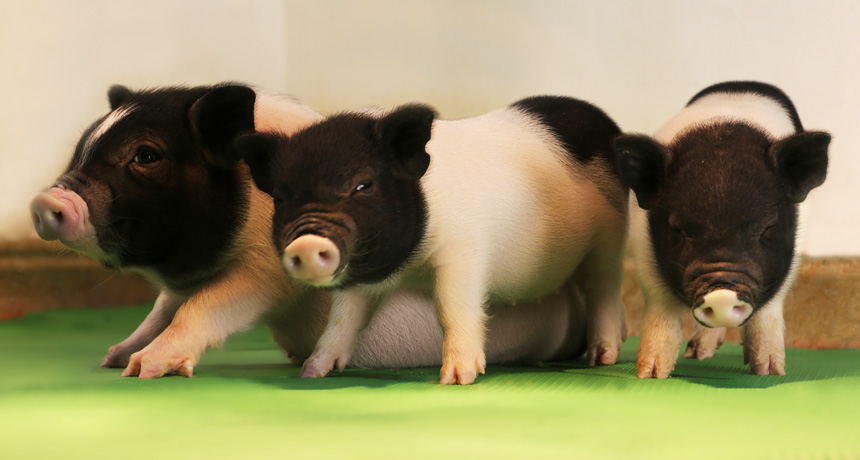Gene editing creates virus-free piglets

Pigs are a step closer to becoming organ donors for people.
Researchers used molecular scissors known as CRISPR/Cas9 to snip embedded viruses out of pig DNA. Removing the viruses — called porcine endogenous retroviruses, or PERVs — creates piglets that can’t pass the viruses on to transplant recipients, geneticist Luhan Yang and colleagues report online August 10 in Science.
Yang, a cofounder of eGenesis in Cambridge, Mass., and colleagues had previously sliced 62 PERVs at a time from pig cells grown in the lab (SN: 11/14/15, p. 6). Many of the embedded viruses are already damaged and can’t make copies of themselves to pass on an infection. So in the new study, the researchers removed just 25 viruses that were still capable of infecting other cells.
The team had to overcome several technical hurdles to make PERV-less pig cells that still had the normal number of chromosomes. In a process similar to the one that created Dolly the Sheep (SN: 3/1/97, p. 132), researchers sucked the DNA-containing nuclei from the virus-cleaned cells and injected them into pig eggs. The technique, called somatic cell nuclear transfer, is better known as cloning. Embryos made from the cloned cells were transplanted to sows to develop into piglets.
The process is still not very efficient. Researchers placed 200 to 300 embryos in each of 17 sows. Only 37 piglets were born, and 15 are still living. The oldest are about 4 months old. Such virus-free swine could be a starting point for further genetic manipulations to make pig organs compatible with humans.